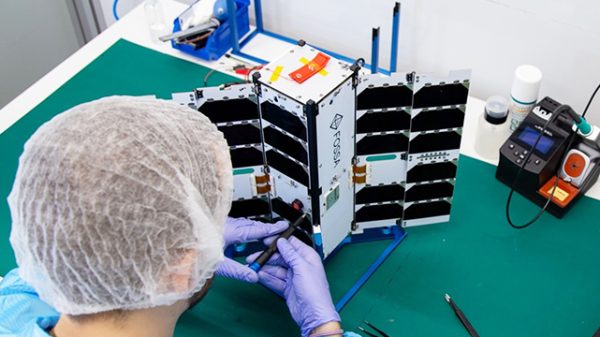How Does Energy Consumption in Cryptocurrency Work?
Cryptocurrencies have gained significant attention and popularity in recent years, offering innovative solutions for decentralized transactions and financial systems.
However, one of the key concerns surrounding cryptocurrencies, particularly Bitcoin, is their energy consumption.
The process of creating, verifying, and processing transactions in cryptocurrencies requires substantial amounts of electricity.
This article aims to explore how energy consumption in cryptocurrency works, shedding light on the underlying mechanisms and environmental implications.
What’s the Problem?
Recently published energy and consumption statistics from Coincryption shed light on how much of an issue energy consumption is for Cryptocurrency.
Every year, the energy consumption for Bitcoin alone averages 129 Terawatt Hours. To put that into context that amounts to more energy than all 5.5 million people who live in Finland use. This amount is also rapidly rising because just seven years ago the figure was 5.46 TWh.
Furthermore, Bitcoin is responsible for generating more e-waste than numerous mid-sized countries around the world. So it poses a notable burden on the environment.
That said, it should be noted that the carbon footprint of cryptocurrency is relatively minimal when compared to other industries around the world.
For instance, banking and gold emit more than double the levels of carbon than Bitcoin, while data centers account for just under 1.5 times the amount. Similarly, electric fans and air conditioning systems emit a whopping 2300% higher level of carbon emissions than Bitcoin does.
The Blockchain and Consensus Mechanisms
That said, it is still a problem. So, what can be done about it? Well to understand that you will need to appreciate how crypto works.
At the heart of cryptocurrencies lies blockchain technology, a decentralized and transparent ledger system. Each transaction is grouped into a block and added to a chain of previous blocks, forming an immutable record. To maintain the integrity of the blockchain, cryptocurrencies employ consensus mechanisms.
The most widely used consensus mechanism is Proof of Work (PoW). In PoW, miners compete to solve complex mathematical puzzles.
The first miner to solve the puzzle and validate the block adds it to the blockchain. This process requires significant computational power, leading to substantial energy consumption.
Mining Process and Energy Intensity
Mining is the process through which new cryptocurrency units are created and transactions are validated. Miners utilize specialized computer hardware, such as ASICs or GPUs, to perform the computationally intensive tasks required for mining. These computations involve numerous iterations and consume a substantial amount of electricity.
The complexity of the mathematical puzzles, known as the mining difficulty, adjusts automatically to maintain a consistent block generation time. As more miners participate or leave the network, the difficulty increases or decreases, impacting energy consumption. This adjustment mechanism ensures that blocks are added at a predictable rate.
Energy Sources and Environmental Impact
The energy sources used for cryptocurrency mining vary. Some miners rely on traditional power grids, which may include non-renewable sources like coal or natural gas. In such cases, the environmental impact of cryptocurrency energy consumption is a concern, as it contributes to carbon emissions and global energy demands.
However, there is an increasing movement towards adopting renewable energy sources when conducting mining operations. Some miners are strategically locating their facilities near renewable energy sites, such as hydroelectric dams or solar farms, to take advantage of cleaner energy sources. This approach aims to lessen the impact of cryptocurrency mining on the environment and promote sustainability.
Environmental Concerns and Solutions
The energy consumption associated with cryptocurrency mining has raised environmental concerns. Critics argue that the carbon footprint of cryptocurrencies, particularly Bitcoin, is significant and unsustainable. The substantial energy consumption required for PoW consensus has drawn attention to the need for more energy-efficient alternatives.
To address these concerns, alternative consensus mechanisms are being developed. Proof of Stake (PoS), for instance, reduces energy consumption by assigning mining rights to users who hold a certain number of cryptocurrency units. By eliminating the need for energy-intensive computations, PoS significantly decreases the energy requirements of cryptocurrency networks.
Furthermore, advancements in technology and the adoption of renewable energy sources offer potential solutions to reduce the environmental impact. As the industry evolves, there is a growing emphasis on designing more energy-efficient mining hardware and exploring sustainable energy options for mining operations.
Conclusion
Energy consumption in cryptocurrency is a complex issue with potentially severe environmental implications.
The PoW consensus mechanism, used by many cryptocurrencies, requires substantial computational power, leading to significant energy consumption. However, the industry is actively exploring alternative consensus mechanisms, such as PoS, which are known to be more energy efficient.
Overall, efforts to transition to renewable energy sources and develop sustainable mining practices are gaining traction, aiming to mitigate the environmental impact of cryptocurrency energy consumption. As the cryptocurrency ecosystem evolves, finding a balance between innovation, energy consumption, and sustainability will be essential for the future of digital currencies.
Ultimately, successfully addressing energy consumption in cryptocurrency will require a combination of technological advancements, regulatory measures, and industry collaboration to ensure a more sustainable and environmentally friendly future.
There is no denying crypto does have some drawbacks. But if it is here to stay, then it is important to ensure that our planet is too.
The post How Does Energy Consumption in Cryptocurrency Work? appeared first on FinanceBrokerage.






























